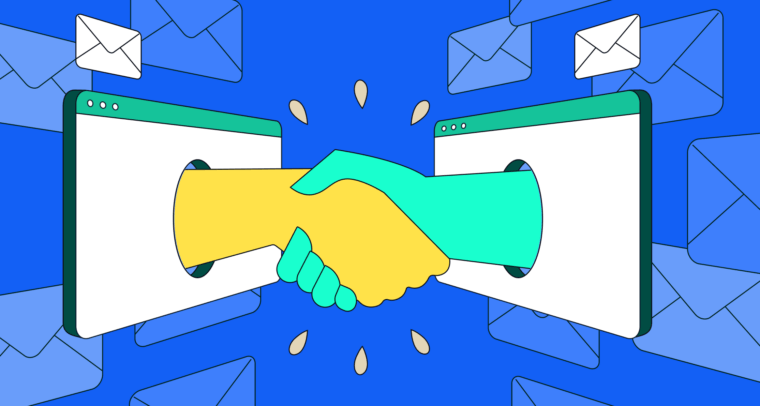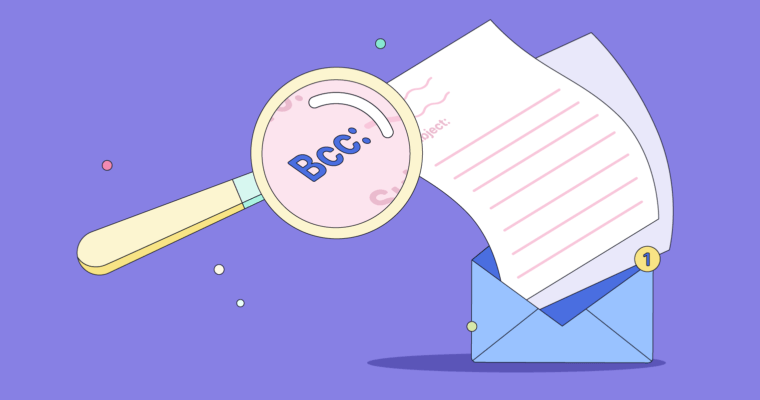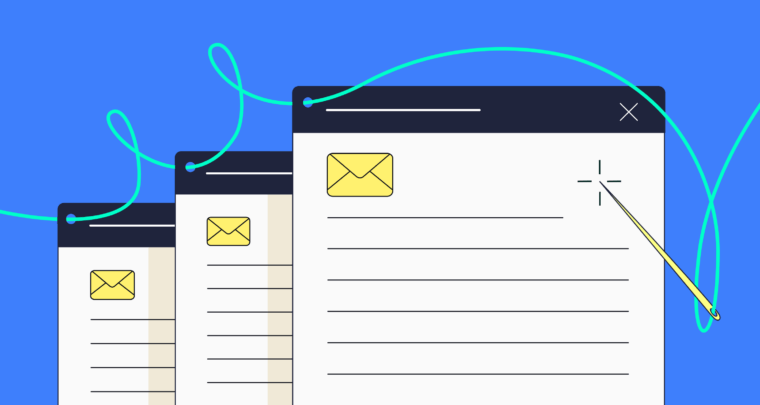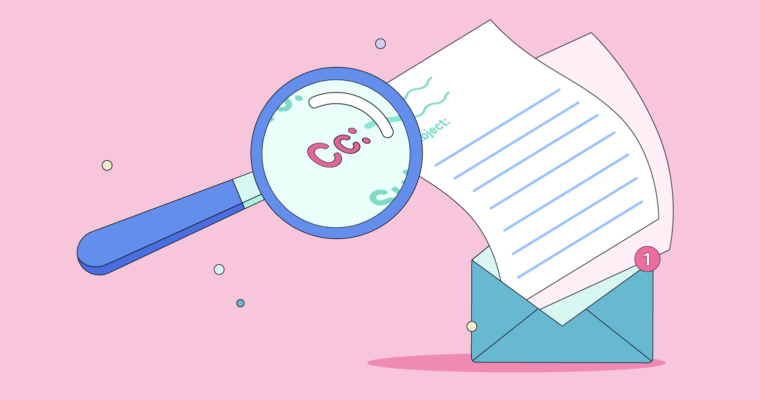
Have you ever wondered how to get in touch with that writer you admire, or that potential employer you’re excited about, without making it awkward? The answer is to write a thoughtful, professional cold email.
But cold doesn’t mean stiff. These are emails you send to people you don’t personally know who can help you in your job search, provide a freelance opportunity, or arrange an interesting collaboration. Consider it the digital version of making a first impression at a networking event.
Here, we’ll explain how to write an impactful cold email, and we’ll offer tips for improving your emails and examples you can use as templates for your cold emails.
What is a cold email?
A cold email is a way to connect with people or businesses you aren’t yet personally acquainted with. These emails are a first impression, and they’re called cold emails because they differ from warm or hot leads, where there has been some form of interaction or relationship established. Cold emails are typically sent to individuals or organizations you haven’t previously communicated with.
People send cold emails to sell products, explore job opportunities, make professional connections, or promote events. The tricky part is getting the other person’s attention and having them respond positively. Successful cold emails are usually concise and personalized and provide some value to the recipient.
When should you send a cold email?
Cold emails are a great tool to kick-start a professional or academic connection. Here are seven ways to use a cold email:
1 Looking for a job/internship
2 Potential clients/customers
3 Network with industry professionals
4 Event promotion
5 Request information or expertise
6 Freelance opportunities
7 Collaboration with other businesses
How to write an effective cold email in 5 steps
Cold emails need to be compelling, personalized, and actionable. Here are the five steps to put your best foot forward in a cold email.
Step 1: Personalize it
Make sure your email comes from a recognizable and professional address. Avoid using nicknames or overly complex handles. Customize your message for the specific recipient. Mention something specific about them or their work to show that you’ve done your homework.
Step 2: Craft a compelling introduction
Write a subject line that sparks curiosity, addresses a pain point, or clearly states why you’re emailing them. Keep it short and intriguing. For example, “Freelance Writer for Hire from LinkedIn” or “Guest on my podcast?” Then, begin your email with a concise and engaging opening line. You could include a compliment, a shared interest, or a brief introduction of yourself. Keep it friendly and to the point.
Step 3: Provide clear information and value
In the body of your email, communicate the value you bring to the table. Whether it’s skills, insights, or a product/service, make it evident how it can benefit the recipient straight away.
Use concrete examples or success stories, but keep your message short and focused. People often skim through emails, so get to the point quickly. Avoid unnecessary jargon and be straightforward in your communication.
Step 4: Ask for what you want
End your email with a clear call to action (CTA). This could be something like “I’d love to meet with you if you have the time; here’s the link to my scheduling tool,” or “Care to collaborate? Just reply to this email to get started,” or “Will you attend? RSVP at this link.”
Step 5: Sign off professionally
Use a friendly sign-off to conclude your email. Try to maintain a professional and approachable tone throughout the email. That way, you’ll avoid sounding too formal or too casual. Strike a balance that aligns with the nature of your email and the recipient.
7 tips for sending a cold email
Ready to send your first cold email? Don’t forget these tips for the best results.
1 Time the send
According to a study from Siege Media, the best time to send a cold email is between 9 a.m. and noon in the recipient’s time zone. The best day of the week to send a cold email is Monday or Tuesday. You can schedule your email to be sent at your ideal time with most email clients nowadays, including Gmail and Outlook. You can use a third-party app if your email client doesn’t offer scheduled sending.
2 Proofread
Nothing is worse than realizing you made a typo after sending a cold pitch email. Use Grammarly’s browser plug-in to proofread your emails in your email client! And remember that if you have doubts about how to get started, you can use Grammarly’s generative AI to help you draft your email.
3 Include shared interests
The best cold emails are personalized—not just with the recipient’s name, position, and company, but also with their interests. You can usually find personal or business interests on your recipients’ websites, in their body of work, or in their public social media profiles like on LinkedIn.
4 Share your availability
Make it as easy as possible to get what you’re asking for. If you suggest a meeting as your call to action, or if you let them know you’re open to work, you can simply write your upcoming availability in the email or include the link to a scheduling tool. Tools like Google Calendar and Cal.com have free options for finding meeting times.
5 Follow the rules
Laws in some parts of the world govern unsolicited emails and require certain disclosures and opt-out options for recipients. For example, in Europe, there’s the GDPR, and in the United States, there’s the CAN-SPAM Act. These mainly apply to large batches of cold emails but are still essential email rules to follow. Brush up on these laws to make sure you’re doing it legally and ethically.
6 Add a PS
Many recipients take the time to read the PS in an email—some even read it first. Add a personal touch in the PS to make your email more eye-catching and compelling. Also keep this in mind: the shorter your email, the more visible your PS.
7 Plan to follow up
You’re more likely to get a response from the follow-up to your cold email than the original cold email itself. More than half of the replies to cold email campaigns come from a follow-up email. Don’t be discouraged if you don’t get an answer from your first follow-up! Three follow-ups is a completely normal target.
Cold email examples
Need inspiration? Here are three examples of cold emails.
Freelance Writer Cold Email Example
Hey [Manager’s Name],
I discovered that you’re the operations manager at [Company Name]. I’m [Name], a freelance writer for restaurant and hospitality brands. I’ve written for local breweries, inns, and the state park system.
My skills include:
- Email copywriting
- SEO blog writing
- Website copywriting
- Menu copywriting
I’d love to learn more about [Company Name]’s current copywriting needs (if any). I’m happy to talk to you over a video call or right here via email!
If you don’t need a writer right now but don’t want to lose track of my information, please reply, and I’ll add you to my follow-up list for potential future opportunities.
If you do have a current need for a writer, you can schedule a discovery call with me here or reply to request my pricing guide and learn more about me and my services.
You can see my portfolio here [link]. More of my work can be found on my LinkedIn profile.
I’m excited to hear from you and glad we could connect.
Sincerely,
[Your Name]
PS: I really enjoyed seeing the opening of your latest restaurant—your team was so creative with the drinks menu.
Example cold email for job inquiry
Hi [Hiring Manager’s Name],
I’m [Your Name], and I recently came across [Company Name] when I was researching opportunities in [industry]. I was particularly excited about [specific project or achievement of the company].
As someone deeply passionate about [relevant skill or interest], I’d love to explore potential opportunities at [Company Name]. I believe my [mention key skills or experiences] and track record of [brief success story or achievement] would fit well with your company’s needs.
I’d appreciate the opportunity to discuss how my background and skills could contribute to the success of your team. Could we schedule a brief call at your convenience? [Include a link to your scheduling tool or your availability]
Thanks for considering me. I look forward to connecting with you!
Chat soon,
[Your Full Name]
[Your Contact Information]
Example cold email for networking
Hi [Professional’s Name],
I’m [Your Name], a [your profession]. I’ve been following your work in [industry] and seen you grow over the past [length of time]. Your recent [mention a specific project or achievement] was amazing. It looks like you’re thriving!
I am currently [your role or background] and have a passion for [shared interest or industry topic]. Collaboration and learning from my peers has really strengthened my skill set and has been mutually beneficial to me and my partners over the course of my career, and now I’m ready for a new challenge.
I’d love the opportunity to connect with you, hear more about your experiences, and perhaps explore potential areas of collaboration. Do you have the time for a short virtual coffee chat in the coming weeks? [Include a link to your scheduling tool.]
Thanks for considering my request! I look forward to the possibility of learning from your valuable insights.
Warmly,
[Your Full Name]
[Your Contact Information]
Cold email FAQs
What is a cold email?
A cold email is an unsolicited email sent to a recipient without prior contact or consent. A cold email is sent to someone you’ve never met before, introducing yourself and your interests or needs. The goal is to grab their attention, show them how you can add value, and make it easy for them to respond or take the next step.
What is the benefit of sending a cold email?
Sending a cold email can open up new opportunities by connecting you with people or businesses you wouldn’t have met otherwise. Cold emails start a conversation that could lead to exciting collaborations, job opportunities, or valuable insights. They help you expand your network and create personal and professional growth possibilities.
When should you send a cold email?
You should send a cold email when you’re looking for a job, trying to get new clients, want to share an event, or are trying to network. Cold emails are a great tool to use when you see a chance to kick-start something professional, whether for a job, expanding your network, or exploring collaborations. Monday or Tuesday mornings are usually the sweet spot for sending cold emails.






